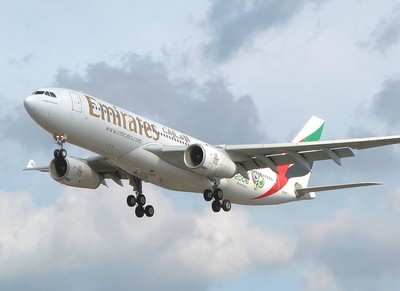Air Traffic System Struggles To Keep Up With Growth In the
Region
According to the International Air Transport Association (IATA),
Middle Eastern airlines saw an increase in airline passenger demand
of 16.8 percent in July year-on-year, and a 19.4 percent jump over
the first seven months of the year. The Middle East has seen rapid
growth in air traffic due to increasing number of flights operating
from the regional hub.

But the increase is causing significant pressure on the region's
air traffic control operations. With around 80% of Middle Eastern
airspace being restricted for military use, air corridors are
becoming busier, and this is putting pressure on regional
authorities to increase the capacity and efficiency of air traffic
operations.
Despite warnings from IATA that this growth is unsustainable and
is now entering a slower phase, the region is already experiencing
flight and landing delays due to the amount of traffic. To cope
with the growth in passenger demand, regional airlines are
increasing their fleets. Emirates, for example, already operate 12
Airbus A380's, and has 72 on order, among other recent purchases.
Airports are not far behind either, with new projects such as
Dubai's Al Maktoum International Airport, which is already
operating flights, and Abu Dhabi's announced construction of a $7
billion international airport to help meet traffic demands in the
Emirate. Air traffic control operators and authorities are having
to match this growth by either increasing the capacity of the
region's corridors, or the efficiency of how they are used.

"New technology, such as satellite CNS, enables a lot of Middle
East countries to restructure their ATC units and their airspace"
said Ehab Abdel Galil, Air Traffic Controller at the National Air
Navigation Services Company (NANSC) in Egypt. "More collaboration
between civilian and military authorities to meet the growth of
traffic in this region" is needed, according to Ehab. Working
together would enable an increased availability of airspace to help
relieve some of the traffic congestion in the Middle East. "I think
the whole region is moving forward on these issues, which will
impact the redesign of regional network airways," he added.
Ehab will join the Director-Generals of UAE's General Civil
Aviation Authority (GCAA), Saudi's Authority of Civil Aviation
(GACA), the Syrian Civil Aviation Authority (SCAA), and Oman's
Civil Aviation and Meteorology Authority, to map out the best way
forward in achieving this more efficient re-design of regional
airspace. They will hold the 2nd Annual Air Traffic Control
Optimisation Summit, November 1st and 2nd in Dubai, UAE.

The outcome of the summit may well have a significant impact on
the future growth of air traffic in the Middle East and end
constant delays. The Air Traffic Control Optimization Summit will
explore how the region's air traffic control authorities and
operators are working together with airlines and military
establishments to increase the capacity and efficiency of the
region's air traffic corridors.
 ANN's Daily Aero-Term (04.20.24): Light Gun
ANN's Daily Aero-Term (04.20.24): Light Gun Aero-News: Quote of the Day (04.20.24)
Aero-News: Quote of the Day (04.20.24) ANN's Daily Aero-Linx (04.21.24)
ANN's Daily Aero-Linx (04.21.24) Aero-News: Quote of the Day (04.21.24)
Aero-News: Quote of the Day (04.21.24) ANN's Daily Aero-Term (04.21.24): Aircraft Conflict
ANN's Daily Aero-Term (04.21.24): Aircraft Conflict





